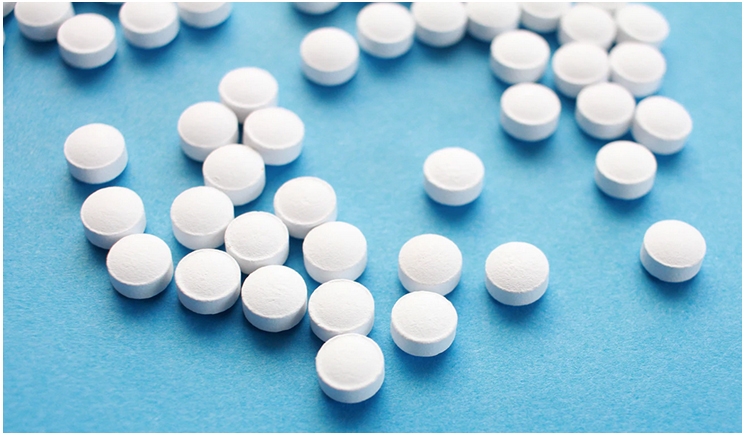
Germ warfare typically refers to using germs to kill an adversary. But the Centers for Disease Control and prevention (CDC) warn of a bigger threat—antibiotic resistance.
In 2019, about 3 million infections were caused by antibiotic-resistant bacteria and fungi, with 48,700 deaths either directly from the infection or from Clostridioides difficile related to the infection.
Because new forms of antibiotic resistance can cross international boundaries and even move between continents with ease and remarkable speed, world health leaders describe antibiotic-resistant germs as nightmare bacteria that pose a catastrophic threat to people worldwide. And there aren’t enough new antibiotic solutions on the horizon to fight these super bugs.
Antibiotic-resistant infections threaten modern medicine. In 2016, thousands of patients would have faced illness or worse without antibiotics, including:
- More than 33,000 organ transplants
- More than 500,000 kidney dialysis patients
- About 650,000 patients receiving chemotherapy treatments
- At least 1.7 million sepsis treatments
- 1.2 million Cesearean sections
- More than 30 million patients with diabetic infections
Antibiotic-resistant infections add considerable costs to the already overburdened healthcare system in the United States. In most cases, antibiotic-resistant infections require prolonged and/or costlier treatments, extended hospital stays, and additional doctor visits and healthcare use, resulting in greater disability and death compared to infections that are easily treatable with antibiotics.
Estimates of the total economic cost of antibiotic resistance to the United States range as high as $20 billion in excess direct healthcare costs, with additional costs to society for lost productivity as high as $35 billion a year.
The scariest aspect of the report is that many of these infections could have been avoided. The use of antibiotics is the single most important factor leading to antibiotic resistance around the world. Antibiotics are among the most commonly prescribed drugs in human medicine, but up to 50% of all the antibiotics prescribed for people are not needed or are not optimally effective as prescribed.
How Germs Fight Back
Antibiotics are drugs that fight infections caused by bacteria in both humans and animals. They fight these infections either by killing the bacteria or by making it difficult for the bacteria to grow and multiply. Antibiotics only treat certain bacterial infections. They do not have any effect on viruses.
Anytime antibiotics are used, they can cause side effects and lead to antibiotic resistance. Bacteria become resistant to antibiotics through several mechanisms. Some bacteria use enzymes and proteins to neutralize an antibiotic by destroying it or making it harmless. Other bacteria have learned how to pump antibiotics back outside of themselves before they can do any harm. Some bacteria can change their outer structure so the antibiotic has no way to attach to them. Some can change or limit the number of their cell wall entryways, blocking the antibiotic’s entrance. And, some bacteria can even change or avoid the antibiotic’s target with new cell processes.
After being exposed to antibiotics, sometimes one of the bacteria can survive because it found a way to resist the drug. If even one bacterium becomes resistant to antibiotics, it can then multiply and replace all of the bacteria that were killed off. Exposure to antibiotics then provides selective pressure, making the surviving bacteria more likely to be resistant. Bacteria can also become resistant through mutation of their genetic material now inherited from generation to generation.
But that’s not all. Plasmid circles of resistant bacterium DNA can actually move between cells. Even small pieces of DNA can change the entire DNA of a cell, passing resistant chromosomes back and forth between plasmids. Viruses that attack bacteria can also carry DNA from bacterium to bacterium, even if the bacterium is dead.
How Antibiotic Resistance Spreads
Bacteria are everywhere and enter our body every time we eat or breathe. Some are good, while others make us sick. Antibiotics kill bacteria that cause infections, but antibiotic-resistant germs find ways to survive. Antibiotic-resistant bacteria multiply and can spread their resistance directly to other germs. Antibiotics also kill helpful bacteria that protect us, giving antibiotic-resistant bacteria an even bigger advantage. Once antibacterial resistance emerges, it can spread into new settings and even between countries.
How to Protect Yourself and Your Patients
The CDC offers recommendations for how you can protect yourself and your patients against the threat of antibiotic resistance:
- Ask your healthcare provider about your risks for certain infections and sepsis.
- Keep cuts clean and covered until healed.
- Follow doctor care instructions for chronic diseases like diabetes or heart disease.
- Keep your hands clean, which is the best way to prevent getting and spreading infections, especially after handling animals.
- Get vaccinated.
- Know the signs and symptoms of infections to avoid complications.
- Use antibiotics as little as possible and know the side effects.
- Wash your hands before preparing food.
- Separate raw meat from other foods.
- Cook foods to safe temperatures.
- Promptly chill leftover foods.
- If traveling abroad, get vaccinated, check health alerts, stick to safe food and drinks, and have a plan in case you get sick.
- Learn about the risks of medical tourism.
- Practice safe sex, from start to finish.
Specifically for Dentists
Preventing infection is the best medicine. This is why I have always recommended systemic antibiotics as a last resort to fighting the bacterial infection we call periodontal disease. Using laser assisted periodontal therapy in conjunction with scaling and root planing plus the Clean Kiss Organic Oral Care homecare system has worked well with the dentists I consult, typically avoiding the need for systemic antibiotics.
Ms. Meditz is founder and executive director of HCP Wellnet and formulator of Clean Kiss products. Her career mission is to “make HEALTH contagious” via oral health. She can be reached at leona@gowellnet.com.
Related Articles
The Silent Killer Only Dentists Can Stop
There’s No Single Silver Bullet for Improving Oral and Systemic Health
Nutritional Supplements Can Support Periodontal Health











